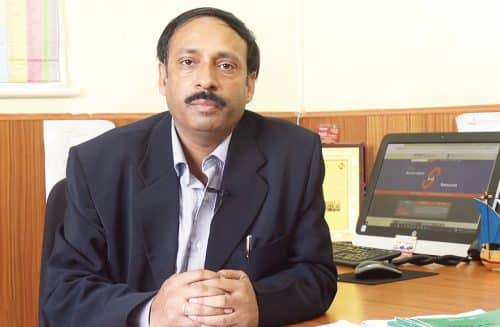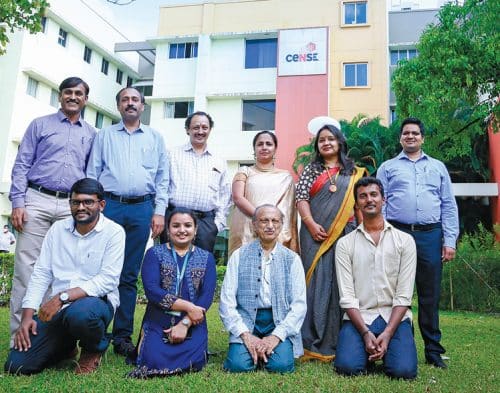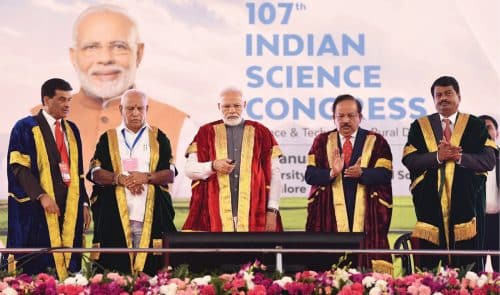India has been ramping up its efforts to emerge as a leading contributor to the global electronics ecosystem. The government of India has announced a slew of policies and initiatives to make India self-reliant in the field of electronics. One of such initiatives is called I-STEM, which aims to support and accelerate the growth of tech startups. The Electronics For You team spoke to Dr Sanjeev Kumar Shrivastava, COO and National Coordinator at I-STEM, to understand how he and his team at I-STEM are trying to create a game-changer for electronics and tech startups. Here’s what we discovered.

Q. Can you tell us what I-STEM is?
A. I-STEM stands for Indian Science Technology and Engineering facilities Map. It is an e-portal (www.istem.gov.in) that has the database of all the research infrastructure revolving around creating and building new innovations. One of I-STEM’s objectives is to provide a platform for the development of indigenous equipment, technical supplies, and accessories. I-STEM is sponsored by the Office of the Principal Scientific Adviser (PSA) to the government.
This portal came into existence in 2017, but it was launched on January 3, 2020. It is based on the idea of sharing public resources with the public. Registration on the portal is completely free. It supports private organisations too. We want to link researchers with resources. This portal is going to help everyone in the industry trying to build new innovative products.
We have listed on the portal more than 20,000 equipment located in more than 1,050 organisations in various zones like Central, East, North, Southeast, and West. Much of the equipment is from the South, with numbers exceeding 6,000.
As a host institution (custodian), you only have to provide the name of your equipment, the project/scheme it is under (if any) and update the usage data as well as the make and model of the equipment. As custodian you can also add how much you would charge for using your facility/equipment.
Q. What is the process of using this portal?
A. You can register yourself on this portal as a user. The portal currently has 25,000 users. If a startup or company wants to share their facilities with the users, it can register as custodian. This way custodians can use the portal as a live, up-to-date inventory of equipment or facilities available in their institution/organisation. One can also register as a supplier or service provider.
The I-STEM portal allows any researcher to check the availability and operational status of the geographically dispersed facilities, check the cost of using it, and reserve the most suitable one online.
Both users and custodians can communicate with each other through the portal itself. There is no need for an alternative means of communication.
Q. How can this portal be a game-changer in terms of helping electronics startups grow in India?
A. The extensive selection of resources listed on the portal will help startups working on any innovation by supporting them to initiate it by providing basic equipment and facilities. They won’t have to worry about the infrastructure since all of the infrastructures are public resources created with public funding, meaning that the host institution (custodian) ought to help you when you require an available facility in the country.
Apart from that, as per the Cabinet approval in February 2020, we have developed a digital catalogue of the tech products and technologies which have been created in the last five years in academic labs as well as public sector enterprises and national labs.
The whole idea behind making this digital platform is that if anyone wants to start a startup, then they can get an idea about where the highest opportunities lie, what kind of technology is available and where, along with who can guide them on using the technology.

Q. What kind of technologies can entrepreneurs expect to find on the digital catalogue?
A. We currently have more than 625 technologies listed by various organisations. People have developed a lot of technology in healthcare sector; we currently have 110 technologies available for healthcare.
Q. What other facilities can startups avail of, other than being supported with equipment?
A. I-STEM is also a great marketplace for a startup’s products. Since the users on the portal are quite knowledgeable, one can easily reach the targeted group of customers from scientific community. We have more than 23 IITs and ICMR labs, 399 state universities, and so on. One can also register as a supplier for their product and if the researchers in these labs need it, the portal can act as a one-stop solution for both users and suppliers.
Q. Being a government-sponsored portal, I-STEM’s reach is obviously nationwide. But is there any way a user can find information specifically pertaining to the region he is operating in?
A. We have created an R&D map (https://www.istem.gov.in/research) that gives the idea of the kind of research going on in universities so that if anybody is looking for details of that particular area of research in his region, they will be able to contact the researcher as well as the supervisor and get the information.
There is also a programme of the Office of the PSA that has established City Knowledge and Innovation clusters that are called Science and Technology Clusters, currently in six cities including Jodhpur, Pune, Hyderabad, Bhubaneswar, and one coming up in Bengaluru, which will be part of the Indian Institute of Science (IISc) in Bengaluru. The whole purpose of these clusters is to connect all the researchers on a regional level. I-STEM, listed with government agencies, industries, and academies, will provide a platform as needed to all the custodians and users of the City Knowledge and Innovation Clusters.
Q. Many electronics startups fail while IT and software startups seem to have high chances of success. Any thoughts on why?
A. When talking about electronics startups, we have never really taken the time to analyse what exactly does our Indian market as well as society require. We need to analyse what product/service/solution is needed in the industry, what is the ecosystem in the country, and whether it suits our startups or not. If we recognise this, we can make it succeed. The number one proof of that is the fact that many Chinese companies are selling those products in our country. If these things are not taken care of, it will definitely be a failure, because the world is moving very fast in this space.
In the electronics space, which verticals do you believe will see the highest growth in India?
I see that the current requirement is electric vehicles and healthcare, especially under present circumstances, which have shown us the importance of robust healthcare infrastructure. I think we should focus on and promote these sectors.
Q. Any advice for entrepreneurs of startups to stand out and stay in the game longer?
A. I would like to advise startups in the country to become the technology leaders worldwide instead of being a supplier to any other country/multinational companies. What I have seen generally happen is that once entrepreneurs build the startup, they transfer that technology to some big company, and the initial idea that drove them to create their own company goes to dust with this transfer to ownership. Instead of selling off their company, founders should strive to evolve their startup into a big company that becomes known for creating world-class products. That, in turn, will help the growth of our country as a manufacturer of high-quality products as well, which goes well in line with our government’s ‘Atmanirbhar Bharat’ vision.

Prime Minister Narendra Modi launching I-STEM portal at the inauguration of the 107th session of Indian Science Congress, at University of Agricultural Sciences, in Bengaluru on January 03, 2020 flanked by then Union Minister for Health & Family Welfare, Science & Technology and Earth Sciences, Dr Harsh Vardhan and then Chief Minister of Karnataka, B.S. Yediyurappa and other dignitaries. Credit










